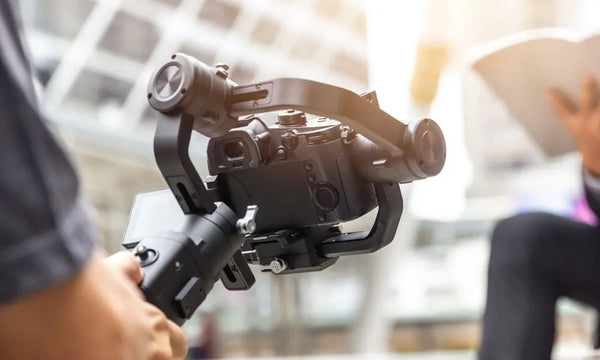
Gimbal vs. Flycam: Which To Choose
When it comes to choosing a camera stabilizer, you have a world of options. Two popular—but rather different—options are gimbals and Flycams. While the two are both good choices and have similar functions, they also have a few differences that makes each better for different camera operators and situations. This guide will help you decide which to choose: a gimbal or a Flycam.
Choose a Gimbal If...
You Prefer Motorized Equipment
Gimbal stabilizers are typically motorized, with the movement of the gimbal and camera being controlled automatically by that motor. A gimbal functions by balancing out the movement of the camera—if the camera shakes, the gimbal will compensate.
You Have a Small Budget
Because they are usually smaller and have fewer moving parts, gimbals are a better choice for those who have a tighter budget. Depending on the quality and type of gimbal you choose, price can range anywhere from $50 to upward of $500. Usually, you can get a quality gimbal for only a couple hundred dollars.
You’re Just Learning How To Use a Stabilizer
Those who have never used a camera stabilizer before may find that they’re more comfortable using a gimbal than a Flycam. Gimbals are easy to set up and operate, as they are mainly controlled by their motors rather than mechanically. As you move with a gimbal, the motor will automatically balance the camera, and panning is as simple as turning your body, as the gimbal will follow.
Choose a Flycam If...
You Prefer Mechanical Equipment
In contrast to a gimbal, Flycams are controlled mainly by mechanical motion. Typically, Flycams are designed with a vest, which the camera operator wears, as well as an arm with a sled attached to the vest, which supports the camera. The vest and arm help to support the camera’s weight and separate the movements of the camera from those of the operator, allowing the camera’s movements to be smooth. Since this type of stabilizer is mechanical, operators will have to physically control any movement of the camera.
You’ll Be Taking Walking Shots
One of the main uses of a Flycam is filming walking shots. Gimbals don’t compensate very well for a camera’s vertical movement, but a Flycam (being separate from the operator’s body) is easily able to capture smooth shots as an operator walks naturally.
You’re Ready to Experiment With Advanced Equipment
Flycams are considered more difficult to operate than most gimbals. Since they’re not automatic, it takes more skill and practice to operate a Flycam, and it requires a different type of movement than the operation of a motorized gimbal. If you’re up to the challenge of operating a Flycam, take some time to experiment with it!
Gimbals and Flycams are both excellent choices of stabilizers, but this guide on which to choose: a gimbal or a Flycam may have revealed that one is a better option for you than the other. Whether you’d like to give a motorized gimbal or a gimbal vest a go, check out Glide Gear’s inventory to find your favorite new piece of camera gear.
